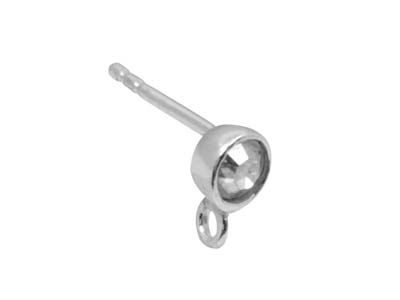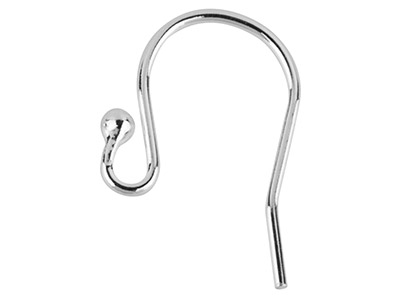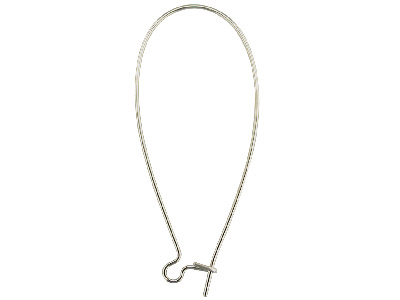Nothing says ‘Glamour’ like a pair of drop earring. Unlike their safer, more sensible counterpart, the stud, long drops are made to be noticed! If the fashion press are to be believed, drop earrings, specifically the ‘chandelier’ style, go in and out of fashion on a regular basis. What can be more elegant than a pair of linear drop earrings? They go with most outfits and flatter all women as they add length to the neck. Note: by linear I mean a single vertical drop, usually straight, but sometimes curved. You will also find that by displaying pairs of drop earrings within your range, you add height and interest which will entice your customer. You always need more flamboyant items to capture people’s attention. This will help you start the conversation around the jewellery which, more often than not, will then convert into a sale.
As with a stud, to get a drop earring fully functional and comfortable there are a few crucial points that need to be considered.
1. First and foremost the weight: many people are put off by large drop earrings because they think they will be uncomfortable. However it’s all a question of balance. Try to consider your choice of materials. Use thinner gauges of metal, hollow beads and tube instead of wire; and don’t always assume you have to use a hook fitting. It can often be far more appropriate to use a stud fitting which will ultimately provide more support for the ear, provided you use an adequate scroll. A Bead and Ring pin (French Fitting) is a great option: a classic ball stud with a simple open loop underneath allowing you to simply add your earring design. Just remember to consider the position of your loop or jump ring to ensure the design is front facing.
2. If you are using crystals in your designs try using a Crystal Stud Fitting. It’s always more aesthetically pleasing if you can carry the design element through into your earring fittings, it creates a far nicer end result and sets a handmade item apart from a mass produced one.

To create a completely “handmade” earring, you can make both the design and the fitting yourself. Hook fittings are extremely easy to make:
- Select your wire, usually 0.8mm as standard;
- Anneal to ensure flexibility: it is best to carry this out in a darkened room. Annealing is the gentle heating of metal to alter the cell structure, creating more flexibility. Silver should be very gently heated using a torch. Keep the torch moving constantly until the metal becomes a dull, cherry red. Maintain this colour for approximatively 30 seconds. DO NOT OVERHEAT. Gently cool on a metal plate;
- You can either heat the end of the wire to create a ball, or simply flatten with a file to create a good solder surface;
- Using round nosed pliers at the tip, gently bend the wire back on itself to create a tight loop;
- Using the same pliers at their widest point, bend the wire back the opposite way to create the main sweep of the fitting;
- Simply cut the wire to the required length, round off to a smooth end and straighten and twist to create a nice finish using flat pliers. Note, twisting helps to compact the cell structure of the metal which effectively gently hardens the fitting. Where the annealing process relaxes the metal structure allowing more movement, twisting, bending and flattening compacts that structure allowing less movement;
- Once attached to your design, solder the small loop closed to create a safe strong fitting.
If you don’t fancy making your own fittings or you don’t have the time, you can always buy one from the trade that will complement your style. You can always try simple fittings such as Hook Wire with Bead and Loop or Extra Large Safety Wire. Both of these styles are well finished and have a designer look about them.


3. One final tip: an essential element to jewellery making is wear ability. Never forget that however beautiful your jewellery is, its purpose is to be worn. Metal can be extremely sharp and if a sharp object is swinging around in your ear, you will soon have the tell tale scratches to highlight any bad workmanship. To ensure this never happens, whenever you finish a piece, just take a few moments to hold the item in your hands. Close your eyes and run your fingers over the jewellery to check for any rough or sharp edges. You’ll be surprised at what might be revealed. You may feel a bit silly, but it may prevent any embarrassing returns from your customers!

Cooksongold
